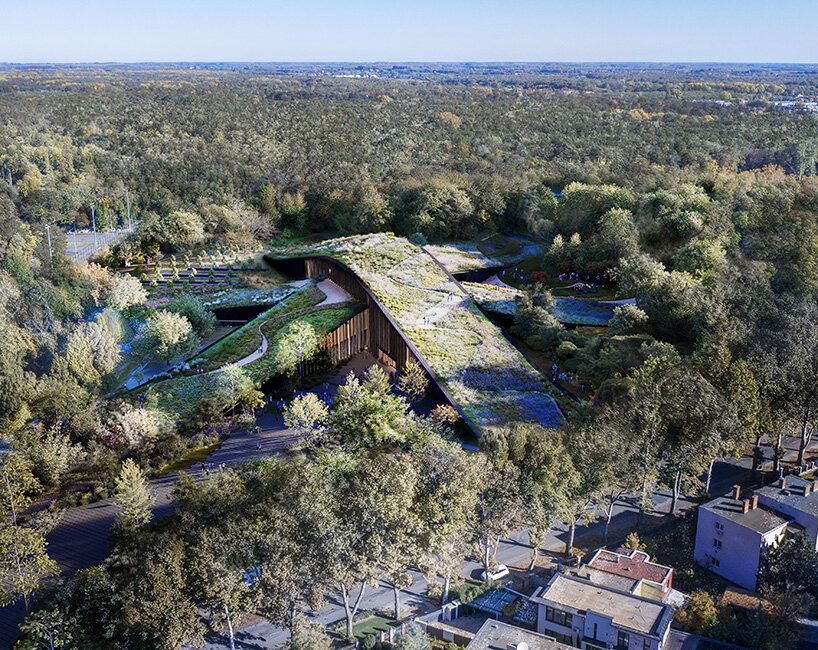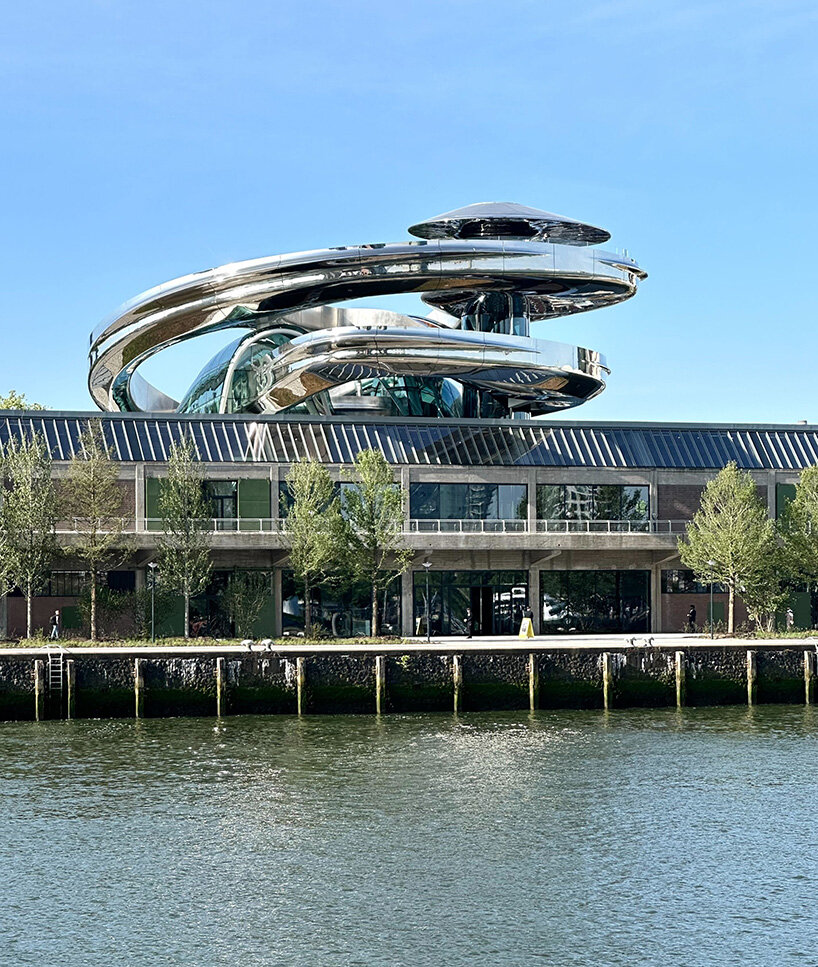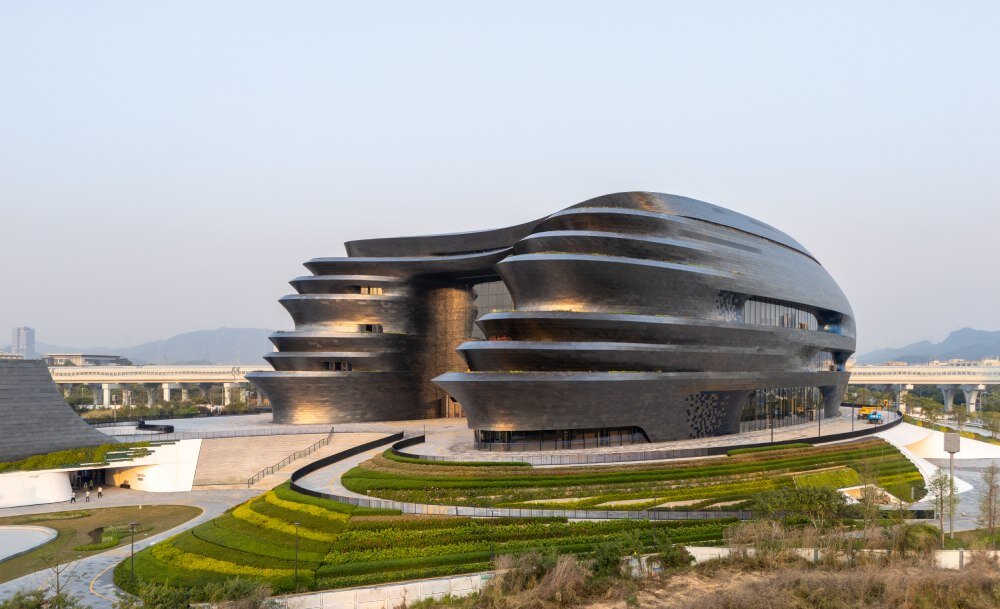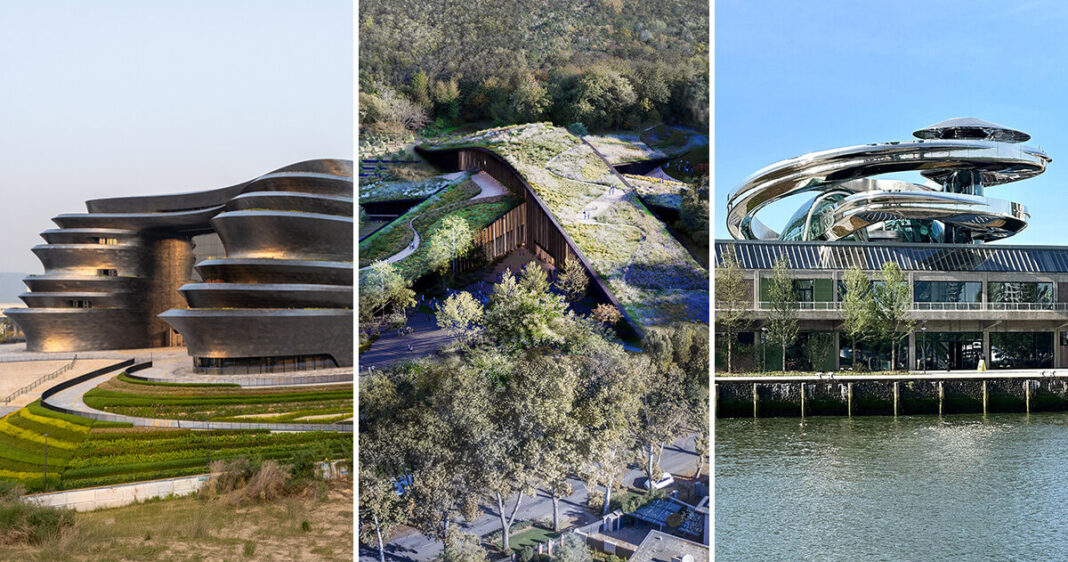a global roundup of museums
Museums offer a singular way to experience architecture as a living record. Across the world, new cultural institutions and thoughtful transformations continue to shape how we engage with artwork, historical artifacts, and civic life. In this context, architecture becomes a means of orientation, framing memory and revealing histories. This year, major museum projects have been unveiled and completed. From subterranean expansions to open-air installations, the physical frameworks of these institutions reflect shifting curatorial values and public expectations. Some buildings stretch across city streets or rise from the forest floor, while others embed themselves carefully within existing heritage, expanding through deliberate restraint.
To celebrate International Museum Day, held on May 18th each year, designboom rounds up a selection of recently unveiled and anticipated museums. These projects move beyond the boundaries of the traditional gallery, inviting new modes of participation and perception. What emerges is a deeper consideration of structure and story — each museum offers its own response to the evolving role of architecture in public life.
The Frick Collection, New York, NY | image © Nicholas Venezia
In Debrecen’s Great Forest, the Hungarian Natural History Museum designed by Bjarke Ingels Group with Vikár és Lukács Építész Stúdió, Museum Studio, and TYPSA rises from the ground in a trio of landscaped ribbons that weave through the trees. The mass timber structure is partially embedded into the terrain, its charred wood facade drawing material cues from the forest while supporting the ecological rhythms of the site.
Conceived as both architecture and landscape, the building folds together exhibition halls, public spaces, and research facilities in a continuous spatial flow, anchored by a central atrium and topped with native-planted green roofs. Viewed from above, the museum appears as an extension of the forest floor, its geometry clear but softened by its interaction with the natural surroundings. Passive design systems and on-site renewables help stabilize the interior climate, reinforcing a broader vision of cultural and environmental restoration.

Hungarian Natural History Museum, Debrecen, Hungary | visualization © BIG
Fenix, the new museum of migration designed by MAD and led by architect Ma Yansong, has opened its doors within a transformed 1923 warehouse in Rotterdam’s Katendrecht district. The project anchors itself in a place once defined by departures, reimagining the monumental port structure as a civic space where personal histories and collective memory converge. At its core rises the Tornado, a spiraling double-helix staircase that cuts through the historic building and culminates in a rooftop observatory. This gesture of upward motion becomes a sculptural expression of passage, both physical and symbolic.
Inside, exhibitions unfold across immersive installations and contemporary artworks, interweaving photography, found objects, and oral histories to chart the human experiences of migration. At ground level, a freely accessible public plaza with food offerings and performances reflects the city’s multicultural spirit. For Ma Yansong, Fenix is at once an architectural milestone and a vessel for encounter and memory. It is an idea brought to life as visitors ascend through light, shadows, and shared stories.

Fenix Museum of Migration, Rotterdam, The Netherlands | image © designboom
In Shenzhen’s Guangming District, the newly opened Science & Technology Museum by Zaha Hadid Architects stands as a bold focal point at the edge of the city’s emerging Science Park. The spherical structure anchors the site with a deep blue stainless-steel skin that subtly shifts in color and reflects the sky. Terraces unfold to the west, connecting the building to the park and extending the experience of the galleries outdoors.
A vast central atrium serves as the spatial core, with exhibition spaces branching outward in layered, shifting planes that invite movement and exploration. The design merges civic architecture with sustainable ambition, incorporating passive ventilation, solar energy, and water recycling while using a digital twin to navigate its intricate geometry. Designed as a cultural and research hub, the museum brings together education and technology into a single fluid form.

Shenzhen Science & Technology Museum, Shenzhen, China | image courtesy Zaha Hadid Architects
After nearly five years of renovation, The Frick Collection has reopened in New York with a renewed sense of architectural continuity, guided by Selldorf Architects in collaboration with Beyer Blinder Belle. The design navigates the delicate balance between preservation and intervention, with subtle alterations that honor the original 1914 Carrère and Hastings mansion while expanding its spatial and programmatic possibilities.
Key additions include the Ronald S. Lauder Exhibition Galleries, a subterranean auditorium, and public access to the residence’s second floor, where private rooms have been carefully restored. The architecture is thoughtful in tone and quiet in execution, from the oak floors to the glass-and-bronze bridge connecting the museum to the Frick Art Reference Library. With expanded facilities and newly integrated sightlines, the building deepens its role as both a cultural landmark and a site of ongoing scholarship.

The Frick Collection, New York, NY | image © Joseph Coscia Jr.
Lina Ghotmeh—Architecture has been selected to lead the redesign of the Western Range galleries at London‘s British Museum, marking a defining chapter in the institution’s ongoing Masterplan. Known for her context-driven and materially sensitive approach, Ghotmeh proposes a reconfiguration that responds both to the museum’s architectural fabric and its layered historical collections. Her design draws from archaeological thinking, using excavation as metaphor and method, particularly in the reimagined space for the Mausoleum of Halicarnassus.
The project, slated for completion in 2026, will unfold through a multidisciplinary collaboration with specialists in conservation, engineering, and curatorial practice. As a result, the Western Range will become a renewed site of encounter — architecturally measured and intellectually charged — where history is at once preserved and reinterpreted.

